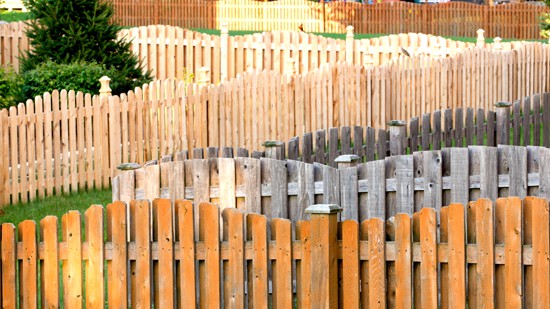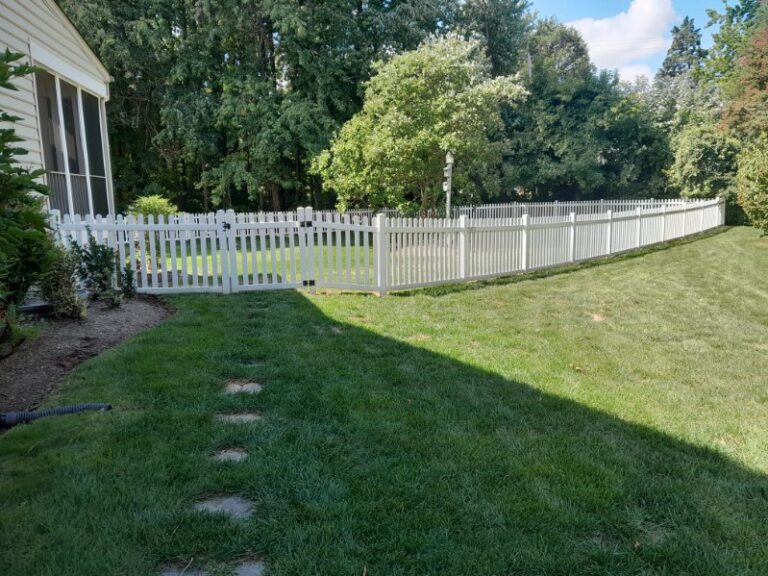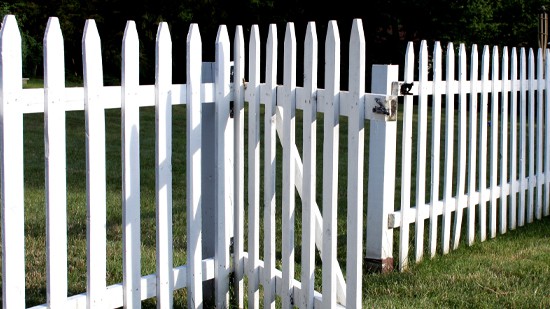Most wood fencing materials are designed to withstand the elements, but using extra precaution could extend the lifetime of your fencing. This is particularly true in the winter when cold temperatures and constant moisture exposure puts your wood at risk. In this guide, we will go over some helpful tips to protect your wood fencing all winter long.
Stain Your Wood Fencing before the Winter
If your wood fence is due for a staining, try to stain it in the fall. This will create a strong moisture shield right before the winter, which will help the wood defend itself from snow, rain, and sleet. We recommend staining your fence at least once every three years, but some factors may cause you to stain your fence more often than that. Luckily, the staining process is simple and fairly inexpensive. The benefits certainly outweigh the cost.
Clean between Your Fence Posts
During the fall and winter months, debris can get stuck between your fence posts. Leaves and twigs may not seem like a big deal, but they can block water from trickling down your fencing. The buildup of moisture in a targeted area on your fence may cause that section to get weak over time. Simply pull that debris out by hand or use a broom to wipe it away. The extra time you spend doing this will save you money in fence repairs later on.
Get Your Wood Fencing Repaired, If Needed
Weak fence posts will get even weaker during the winter. This makes your fence less secure, and it makes it easier for people to see onto your property. If you know your wood fencing needs repair, you’ll be much better off having those repairs made before winter comes. This will also make it easier on the fence installers because they won’t have to trek through snow and ice to get to your fencing. With everything secure and ready to go, you can rest assured that your yard is set up for winter.
Watch out for Falling Limbs
Falling limbs are common in the winter because of the weight of ice and snow on tree limbs. If you have trees on your property with weak limbs, you may want to trim off those areas now. During the winter months, keep an eye on your trees to make sure the limbs don’t fall on your home or your wood fencing. If a branch breaks but does not completely fall, remove it safely before it does any property damage.
Clear Snow from Your Fence Line
Snow may build up around the base of your fencing. This creates a block of moisture that will damage the base of the wood posts. When you shovel your driveway or porch, take a few minutes to pull snow away from your fencing. This will give the snow a better chance at melting, and it will keep the moisture off the fence posts. If you have snow built up on the top of the fence posts, you can just wipe that off with your hand. Be sure to wear a glove for protection.
See Related Blog Posts:
Wood Fence staining guide: Extend the life of your wood fence
Will my privacy fence require maintenance?





